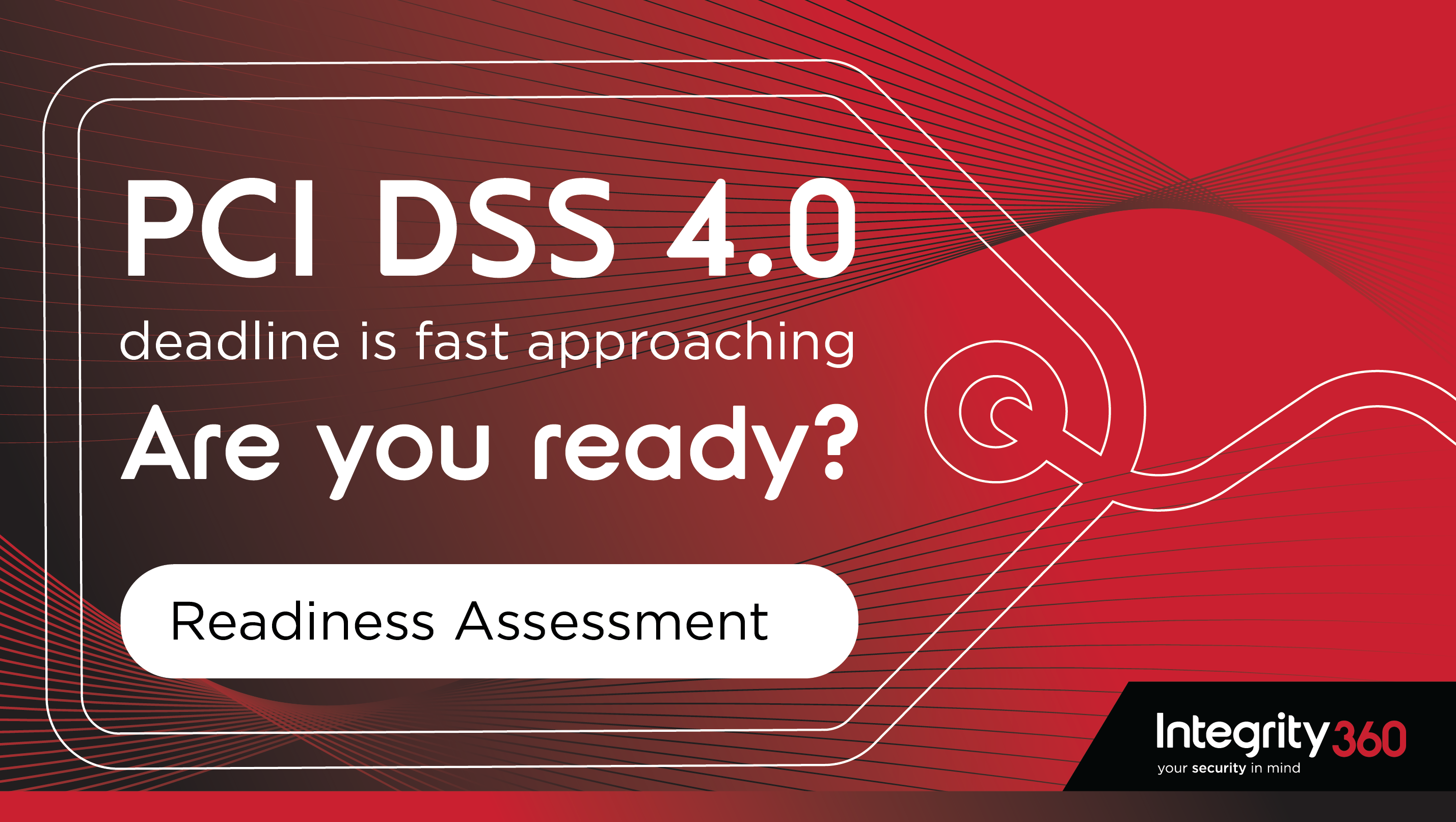The Payment Card Industry Data Security Standard (PCI DSS) has been the bedrock of cardholder data protection since its launch in 2006. With the implementation deadline of March 31st 2024 rapidly approaching, the standard has undergone a significant transformation since its previous version to address the evolving demands and complex nature of modern cyber threats.
Exploring PCI DSS 4.0
PCI DSS 4.0 represents the most current iteration of the Payment Card Industry standard, bringing about pivotal changes in compliance requirements. This version places an emphasis on:
- Increased focus on cloud and service providers
- Expanded scope of requirements
- Emphasis on risk-based approach
- Enhanced focus on data protection
- Continuous monitoring and testing
and introduces new technical and operational requirements for achieving compliance.
The Goals of PCI DSS 4.0
The update to the standard is driven by four main objectives:
- To keep pace with the changing payment industry: As the industry advances, the standards must also progress to maintain relevance.
- To promote continuous security: Security must be an ongoing endeavour, not a one-time checklist.
- To provide flexibility in maintaining payment security: The standard now recognises the diversity of technologies and processes, allowing for more customisation.
- To improve validation methods and procedures: It is crucial that the methods for validating compliance are as strong as the security measures they aim to verify.
Key Developments in PCI DSS 4.0
Introduction of the Customised Approach
The most significant change from PCI DSS 3.2.1 to 4.0 is the introduction of the Customized Approach. This concept allows entities to move beyond the traditional 'Defined Approach', which required strict adherence to the technical controls as specified in the standard. Instead, with the Customized Approach, entities have the flexibility to select controls that they deem most suitable for their environment to manage associated risks. This offers greater adaptability and the ability to embrace innovative solutions. In PCI DSS v4.0, entities have the choice to use either the Defined Approach or the Customized Approach, depending on their specific needs and circumstances.
Updated and New Requirements
Alongside the Customised Approach, PCI DSS 4.0 has updated existing requirements and introduced new ones to mitigate emerging threats. Key updates include:
- Strengthened authentication controls, with a particular emphasis on multi-factor authentication.
- Enhanced password complexity, with the minimum length requirement increased from eight to twelve characters.
- New guidelines for the management of shared, group, and generic accounts.
- Clearly articulated roles and responsibilities for each requirement.
- Authenticated Scans
- Payment page script integrity
- Encryption of sensitive authentication data (SAD)
- Prevention of copying and/or relocating of the primary account number (PAN) when using remote-access technologies
- Necessity to detect and protect personnel against phishing attacks
- Automated mechanisms to perform audit log reviews
- Intrusion-detection/prevention techniques to detect, alert on/prevent covert malware communication channels
The Self-Assessment Questionnaires and the Report on Compliance template have been greatly expanded in levels of detail and doubled in size. Audited organisations are now under a lot more scrutiny to achieve compliance.
PCI DSS 4.0 Implementation Timeline
The transition period of 31 March 2024 provides organisations with the necessary time to transition to the new version while retaining the option to comply with the previous version, v3.2.1. Additionally, out of the 64 of the new requirements, 51 are future dated due to their complexity and/or cost of implementation. Certain requirements will be considered best practices until 31 March 2025, after which they will become mandatory.
Impact on Organisations
For organisations that are already PCI validated, it is crucial to review the changes in PCI DSS 4.0 and begin planning for the transition. This should involve consulting with a qualified security assessor to understand the implications of the new Customized Approach and other changes.
Summary of Changes
The PCI Security Standards Council has made substantial updates to the standard, reflecting the need to stay current with the evolving threat landscape and technological advancements. These changes affect a broad spectrum of requirements and will have implications for all entities that handle cardholder data.
Are you ready for your PCI DSS v4 assessment?
Integrity360 has got your back during this transition with:
- Quick half-day remote workshops to comprehend core changes and plan your strategy accordingly.
- In-depth Technical Gap Analysis for a solid understanding of the new standard.
FAQs
How will the transition from PCI DSS 3.2.1 to 4.0 affect small versus large organisations differently?
The transition from PCI DSS 3.2.1 to 4.0 is likely to have a varied impact on organisations depending on their size. Large organisations may have more resources, both in terms of finances and expertise, to adapt to the new standards, including the development and implementation of the Customised Approach for compliance. They may, however, face challenges in coordinating the update across complex, multi-departmental payment environments. Small organisations, on the other hand, might find the transition more straightforward if their payment systems are simpler, but they could struggle with the resource demands of meeting new requirements. The flexibility introduced in PCI DSS 4.0, such as allowing for a phased implementation and the introduction of the Customised Approach, is designed to help all organisations—regardless of size—transition at their own pace while maintaining security standards.
What are the estimated costs associated with the implementation of the new requirements in PCI DSS 4.0?
The costs associated with implementing the new requirements in PCI DSS 4.0 can vary widely among organisations. Factors influencing these costs include the current state of an organisation's compliance, the complexity of its payment card environment, and whether it opts for the Customised or Defined Approach. Costs might include technology upgrades, professional consultancy fees, training for staff on new requirements, and potential changes to operational procedures. For many organizations, particularly those that have kept their security standards closely aligned with evolving best practices, the incremental cost may be moderate. However, for those that need substantial overhauls to meet the new standards, the costs could be significant. Without specific figures provided by the PCI Security Standards Council or detailed case studies, precise estimates remain challenging and highly context-dependent.
Can organisations implement a combination of the Customised and Defined Approaches within different parts of their payment processing environments?
PCI DSS 4.0 introduces more flexibility for organisations to meet security requirements through the Customised Approach, which allows for alternative but equivalent security measures to be implemented. Organisations can indeed implement a combination of the Customised and Defined Approaches across different parts of their payment processing environments, provided that all actions taken meet or exceed the standard's required security objectives. This means an organization could follow the Defined Approach for certain controls where standard solutions are preferred or easier to implement, and the Customised Approach for others where innovative or specific solutions are necessary due to unique operational circumstances. This flexibility is designed to encourage organizations to not only comply with PCI DSS but to also innovate and strengthen their security measures in a way that best suits their operational realities.








